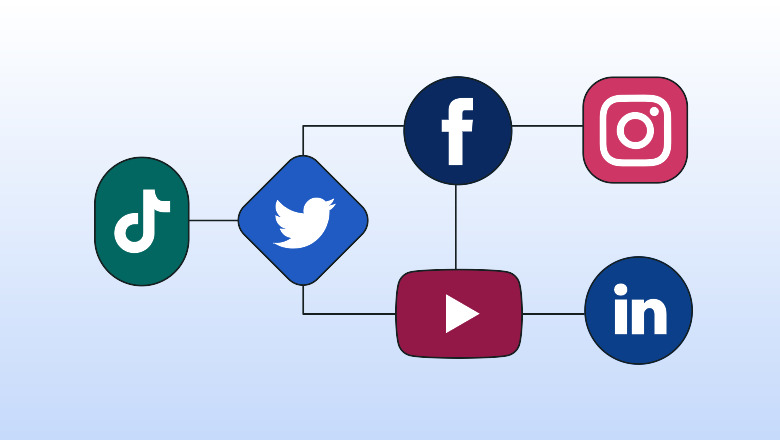In today's digital landscape, social media algorithms are the invisible forces that shape our online experiences. Understanding how these algorithms work can provide valuable insights into optimizing your social media strategy, whether you're a marketer, business owner, or simply an avid social media user. This comprehensive guide will explore the intricacies of social media algorithms, offering tips and strategies to enhance your visibility and engagement across various platforms.
What Are Social Media Algorithms?
Social media algorithms are complex mathematical formulas and data-driven processes used by platforms to determine what content appears in a user's feed. These algorithms analyze a range of factors to prioritize content, aiming to deliver the most relevant and engaging posts to each individual.
At their core, social media algorithms are designed to enhance user experience by presenting content that aligns with their interests and behaviors. This involves processing vast amounts of data, including user interactions, preferences, and activity patterns.
Key Factors Influencing Social Media Algorithms
Several key factors influence how social media algorithms function. Understanding these factors can help you tailor your content strategy to better align with the algorithms and improve your visibility.
Engagement Metrics
Engagement metrics, such as likes, comments, shares, and clicks, are critical indicators of content quality and relevance. Algorithms prioritize content with higher engagement rates because it suggests that the content resonates with users. Higher engagement often leads to greater visibility in users' feeds.
Relevance and Personalization
Social media platforms use algorithms to deliver personalized content based on user interests and behaviors. By analyzing user interactions, such as the types of content they engage with and the accounts they follow, algorithms curate a feed tailored to individual preferences. Content that aligns with these interests is more likely to be shown.
Recency of Content
The timing of your posts can significantly impact their visibility. Algorithms often favor recent content, assuming that newer posts are more relevant and timely. Posting regularly and at optimal times can enhance your chances of appearing in users' feeds.
User Behavior and Activity
Algorithms also consider user behavior and activity patterns. This includes factors such as the frequency of app usage, interaction history, and the types of content users engage with. Content that aligns with users' activity patterns is more likely to be prioritized.
Content Type and Format
Different social media platforms have varying preferences for content types and formats. For example, platforms like Instagram may prioritize visually appealing content, while Twitter may emphasize real-time updates. Adapting your content format to each platform's preferences can improve its performance.
Strategies to Optimize Your Social Media Content
To navigate the complexities of social media algorithms and enhance your content's visibility, consider implementing the following strategies:
Create High-Quality Content
Focus on creating high-quality, engaging content that provides value to your audience. Content that resonates with users and encourages interaction is more likely to be prioritized by algorithms. Invest in high-resolution images, well-crafted captions, and compelling videos to capture attention.
Leverage User Engagement
Encourage user engagement by prompting your audience to like, comment, and share your posts. Engaging with your audience through replies, polls, and questions can foster a sense of community and increase interaction rates.
Use Data-Driven Insights
Utilize analytics tools to gain insights into your audience's preferences and behaviors. Analyze engagement metrics, demographic data, and content performance to refine your content strategy and align it with algorithmic preferences.
Optimize Posting Times
Experiment with different posting times to determine when your audience is most active. By posting at optimal times, you can increase the likelihood of your content appearing in users' feeds and driving higher engagement.
Adapt to Platform-Specific Algorithms
Each social media platform has its own algorithmic preferences and guidelines. Stay informed about platform updates and adapt your content strategy accordingly. Tailor your content to align with each platform's unique algorithmic criteria for optimal results.
Incorporate Trends and Hashtags
Stay current with trending topics and popular hashtags relevant to your industry or niche. Incorporating trending topics and hashtags into your content can increase its visibility and engagement, as algorithms often favor content aligned with current trends.
Foster Authentic Engagement
Build genuine connections with your audience by fostering authentic engagement. Respond to comments, participate in conversations, and show appreciation for user interactions. Authentic engagement can enhance your relationship with your audience and positively impact algorithmic prioritization.
Monitor and Adjust Your Strategy
Regularly monitor your content's performance and algorithmic impact. Use analytics tools to track engagement metrics, reach, and impressions. Based on your findings, adjust your content strategy to optimize performance and adapt to changing algorithmic trends.
The Impact of Social Media Algorithm Changes
Social media algorithms are not static; they evolve over time to address user needs and platform goals. Algorithm changes can significantly impact content visibility and engagement. Stay informed about algorithm updates and industry trends to adapt your strategy accordingly.
Navigating Algorithmic Challenges
While social media algorithms can present challenges, such as decreased organic reach or increased competition, strategic adaptation can help mitigate these issues. Focus on delivering high-quality content, engaging with your audience, and staying informed about algorithm changes to navigate challenges effectively.
The Future of Social Media Algorithms
As social media platforms continue to evolve, algorithms will likely become more sophisticated, incorporating advancements in artificial intelligence and machine learning. The future of social media algorithms will involve even more personalized and targeted content delivery, emphasizing the need for continuous adaptation and optimization.
Understanding social media algorithms is crucial for optimizing your social media strategy and achieving your goals. By focusing on engagement metrics, relevance, personalization, and content quality, you can enhance your visibility and impact across various platforms. Stay informed about algorithm changes, adapt your strategy accordingly, and continue to deliver valuable content to navigate the ever-evolving landscape of social media algorithms successfully.
Frequently Asked Questions About Social Media Algorithms
What are social media algorithms?
Social media algorithms are complex systems used by platforms to determine which content appears in users' feeds. They analyze various factors, such as user interactions and content relevance, to deliver posts that are most likely to engage and interest each individual user.
How do social media algorithms work?
Social media algorithms work by processing vast amounts of data to prioritize content. They consider factors such as engagement metrics (likes, comments, shares), content relevance, recency, and user behavior to decide what content to show in a user's feed. The goal is to present the most relevant and engaging posts based on each user's interests and interactions.
What factors influence social media algorithms?
Several factors influence social media algorithms, including:
- Engagement Metrics: Higher engagement (likes, comments, shares) often leads to better visibility.
- Relevance and Personalization: Content that aligns with a user's interests and behavior is prioritized.
- Recency of Content: Newer content is typically favored over older posts.
- User Behavior and Activity: The frequency and type of user interactions affect content visibility.
- Content Type and Format: Different platforms prioritize various types of content (e.g., images, videos).
How can I optimize my content for social media algorithms?
To optimize your content, consider the following strategies:
- Create High-Quality Content: Focus on engaging, valuable, and visually appealing content.
- Leverage User Engagement: Encourage likes, comments, and shares to boost engagement.
- Use Data-Driven Insights: Analyze performance metrics to refine your strategy.
- Optimize Posting Times: Post when your audience is most active.
- Adapt to Platform-Specific Algorithms: Tailor your content to each platform's preferences.
- Incorporate Trends and Hashtags: Use relevant trends and hashtags to increase visibility.
- Foster Authentic Engagement: Build genuine relationships with your audience.
- Monitor and Adjust Your Strategy: Continuously track and refine your content based on performance data.
What impact do algorithm changes have on social media strategy?
Algorithm changes can significantly impact content visibility and engagement. These changes may alter how content is prioritized or how user interactions are weighted. To navigate these changes effectively, stay informed about updates, adapt your strategy, and focus on delivering high-quality, engaging content.
How can I stay updated on social media algorithm changes?
To stay updated, follow industry news, subscribe to relevant blogs or newsletters, and monitor platform announcements. Many social media platforms regularly release updates and guidelines regarding their algorithms, which can provide valuable insights into changes and trends.
What challenges might I face with social media algorithms?
Challenges with social media algorithms may include decreased organic reach, increased competition, or changes in content prioritization. Address these challenges by focusing on creating engaging content, adapting to algorithm updates, and employing strategies to boost visibility and interaction.
What is the future of social media algorithms?
The future of social media algorithms will likely involve more advanced technologies, such as artificial intelligence and machine learning. These advancements will enable even more personalized and targeted content delivery, emphasizing the need for ongoing adaptation and optimization of social media strategies.
How can I measure the effectiveness of my social media content?
Measure effectiveness using analytics tools to track key metrics such as engagement rates, reach, impressions, and user interactions. Analyzing these metrics will help you assess the performance of your content and make data-driven decisions to improve your strategy.
Why is it important to understand social media algorithms?
Understanding social media algorithms is crucial for optimizing your content strategy and achieving your goals. By aligning your content with algorithmic preferences, you can enhance visibility, increase engagement, and effectively reach your target audience.
















